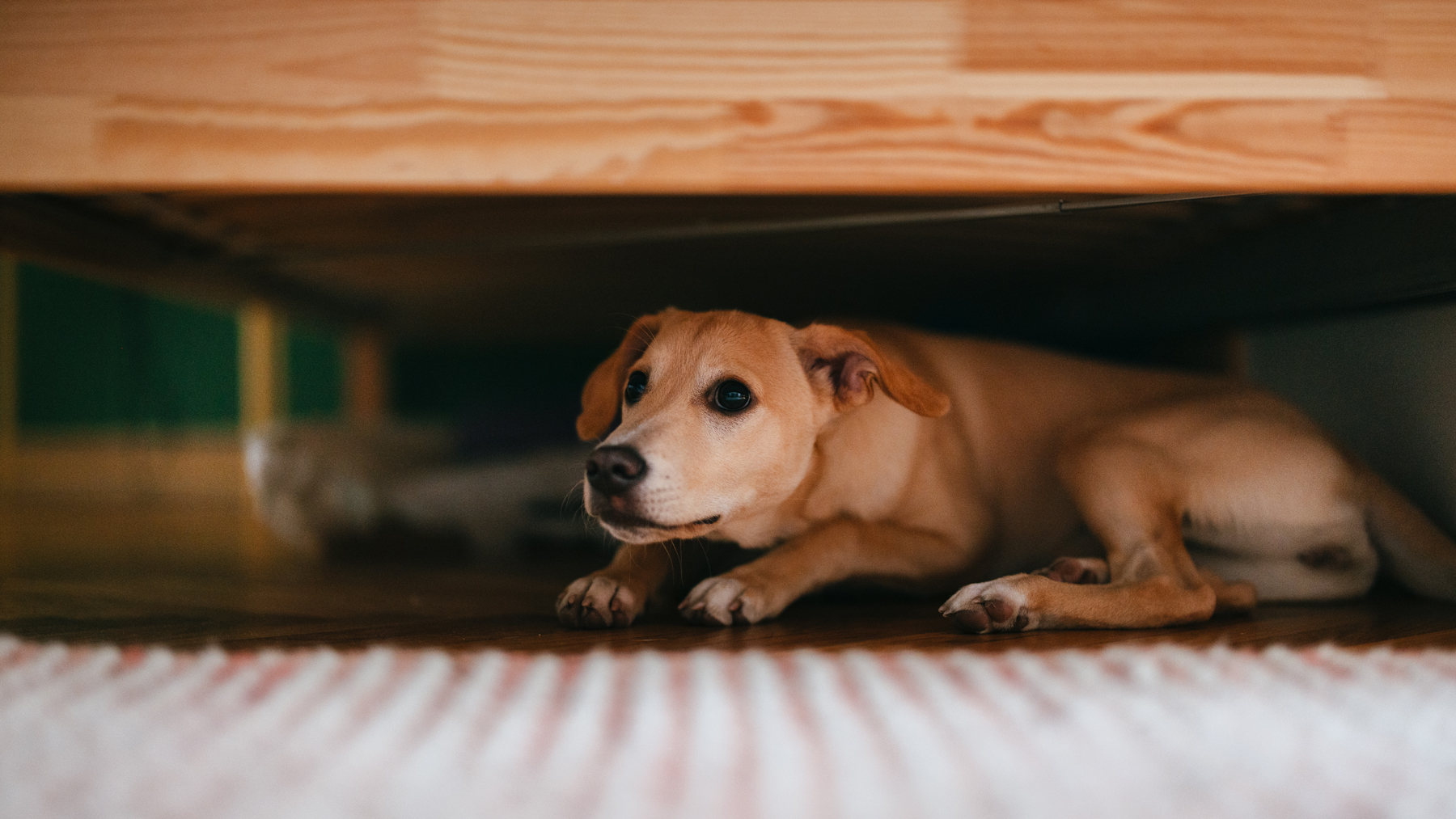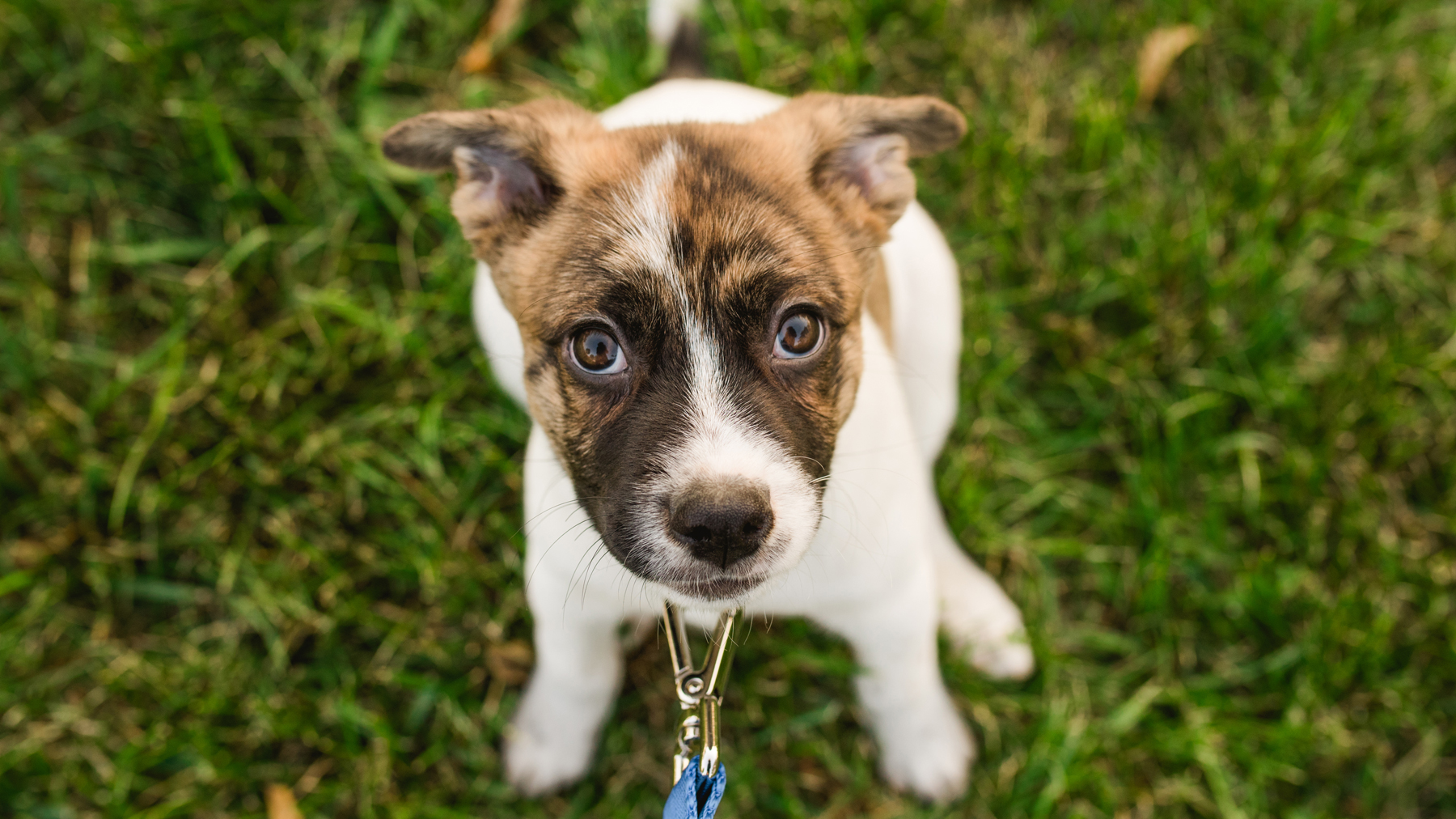How to handle dog fear periods
Are you keen to understand dog fear periods? Behaviorist Jan Barley reveals how to recognize dog fear periods and create a safe environment for your new puppy

Dog fear periods, often called "critical periods", can confuse new dog owners. If your happy, bouncy puppy suddenly becomes fearful and nervous without an apparent cause, it could be a dog fear period. Though the change in behavior doesn't last long, it takes careful management during this time to prevent future fear-based behavioral problems.
According to The National Library Of Medicine, the concept of dog fear periods began in 1945 when two scientists, Scott and Fuller, launched The Dog School to explore critical development periods in dogs.
Just like with anxiety in dogs, not every puppy experiences dog fear periods. It's not typically a breed-specific issue, but nervous breeds may be more predisposed. Sometimes, you can distract your puppy with the longest lasting dog chews or play a fun game, but we will discuss the best strategies for managing dog fear periods later.
Below, you’ll find everything you need to know about the typical signs of dog fear periods and when they might occur, as well as mistakes to avoid and how to help your dog navigate fear or nervousness by setting him up for success.
What are dog fear periods?
Dog fear periods are brief phases of developmental and cognitive changes that can cause sudden and unexpected behavioral changes. You may notice your dog becomes suspicious of something new in his environment or even fearful of things that were not previously a problem.
Dog fear periods are temporary and not a sign there's something wrong with your dog. These critical periods are normal for mental and physical development, although they don't manifest in every dog. If our puppies experience a fear period, we can help them develop confidence and curiosity towards anything they encounter in their environment rather than fear or nervousness.
When do fear periods typically occur in dogs?

There are two critical dog fear periods that may occur during the first year of your dog's life but typically don't last more than a few weeks. That said, dog fear periods usually occur during critical socialization stages.
Get the best advice, tips and top tech for your beloved Pets
The first dog fear period occurs between 8 to 11 weeks old. As most puppies enter their new home at that age, it can be a bit of a scramble to provide positive experiences and refrain from overwhelming your pup. Start by gently exposing him to unfamiliar objects, new people and situations. The challenge is that most puppies have their second vaccination at 10-12 weeks, so they have little exposure to the outside world during the critical period.
The second dog fear period occurs between 6 and 14 months. Your young dog may suddenly become nervous about unfamiliar environments, meeting new dogs and people, and loud noises like thunderstorms. In my experience, this stage is where many inexperienced owners make mistakes by trying to "push" the dog through their fears, often known as flooding.
Jessie was a sensitive and nervous Border Collie, born in rescue, with little socialization skills. She went to her first home at four months old.
When Jessie was six months old, her inexperienced owners took her to a canicross (dog racing) event. They believed exposing Jessie to many people and dogs would help her build confidence. To that end, they sat with Jessie at the high-energy start line for an hour during the race and shouted at Jessie each time she barked at other dogs.
It's a long story, but Jessie became so traumatized from that event that it turned into extreme dog reactivity. Later, it developed into biting people. Eventually, the owners rehomed Jessie to a dog trainer but told me the story later when I worked with their new pup.
If Jessie's owners had understood how to manage dog fear periods sensitively, the story might have had a happier ending.
What are the signs of a fear period?
Your dog may suddenly refuse to walk somewhere they've happily walked for months, become spooked by loud noises or be fearful of household objects like a vacuum. Your dog may freeze, try to hide or run away from situations, people or objects. Your puppy may start growling and barking, which can become excessive.
Unfortunately, inexperienced owners and trainers may label the dog aggressive, particularly in the second adolescent dog fear period. Perceived "dog aggression" is often poorly handled. When a dog genuinely needs understanding and careful management, it's often mistakenly treated as a behavioral problem.
Your pup may also show physical signs such as shaking and trembling, crouching low to the floor and tucking his tail. Notice if his ears flatten and pupils become dilated. His body language will indicate a freeze, fight or flight response. Genuinely, some dogs in this dog fear period are terrified.
What mistakes should owners avoid during fear periods?

The worst advice you can get is "flooding" your dog, meaning you force him into a situation where he is afraid. Thrusting your fearful dog into a situation does two things that will negatively impact your relationship:
- He learns to distrust you when he needs help
- Flooding can create or exacerbate negative behaviors, such as fear reactivity
The most common mistake is handling dog behavior with human psychology, not dog psychology. Stroking and reassuring your dog in turmoil reinforces the behavior.
Never force your pup into "facing his fears" because his prefrontal cortex has "checked out", and his brain solely focuses on survival by escaping the situation or freezing with fear.
How to create a safe and calming environment
There are several things you can do to create the best environment for your puppy during a dog fear period:
- Where possible, give your pup the choice of moving away or towards scary objects or situations. Calmly praise your pup for taking a step forward, and finish on a good note.
- Stay calm, and don't try to reassure your pup with cuddles and attention because you could inadvertently reinforce the fear. Treat the incident as "no big deal."
- Distract your pup with his favorite game or a fun toy. They may not want to play, but it can help temporarily break the mental processes of fear.
- Short training sessions work best for puppies but are particularly beneficial during dog fear periods. Asking your dog for a learned behavior, such as sitting during a nervous moment, can help restore your dog's confidence.
- If you observe your dog entering a dog fear period, set up the environment to manage exposure to the fear triggers.
To sum up, desensitization for dogs is possible through counterconditioning, which looks like gradual exposure coupled with a positive experience, such as food, praise or toy reward.
If you are uncertain how to help your puppy become a confident and well-balanced dog, we advise consulting with a professional behaviorist or dog trainer. Choose someone who understands dog fear periods and has experience with counterconditioning training.

Jan is a dog behaviorist and writer living in the Cotswolds, UK. She qualified as a dog behaviorist in 2012 after training with Sarah Whitehead, a Certified Clinical Animal Behaviorist with a MSc in Animal Behavior. Jan has shared her life with dogs for over fifty years and is fascinated by behavior. She enjoys helping people better understand their dogs to develop a deep bond and enjoy time together. Jan particularly enjoys working with impulsive and reactive dogs as her legacy from helping Poppy, her rescue Weimaraner cross overcome fear reactivity.
